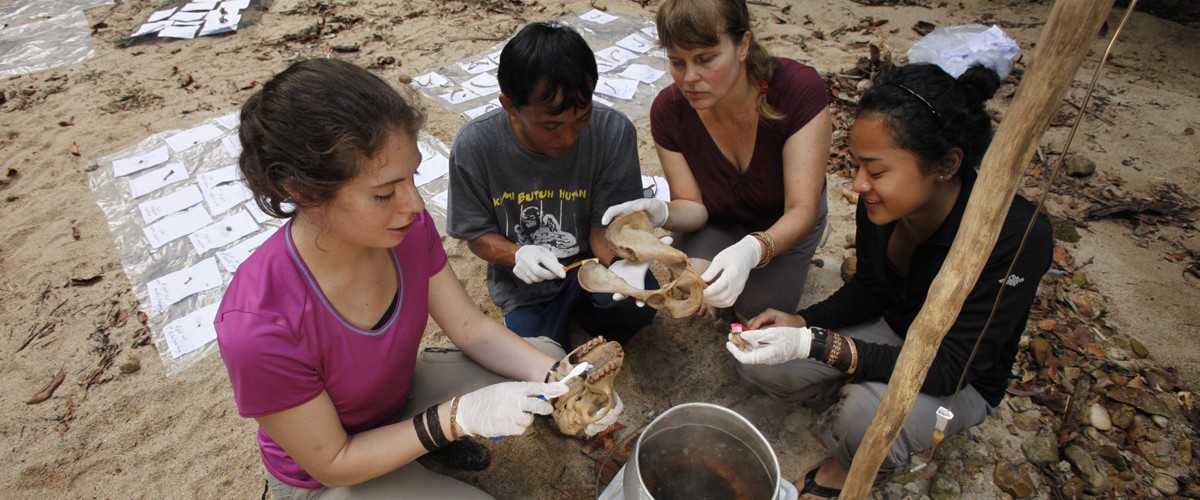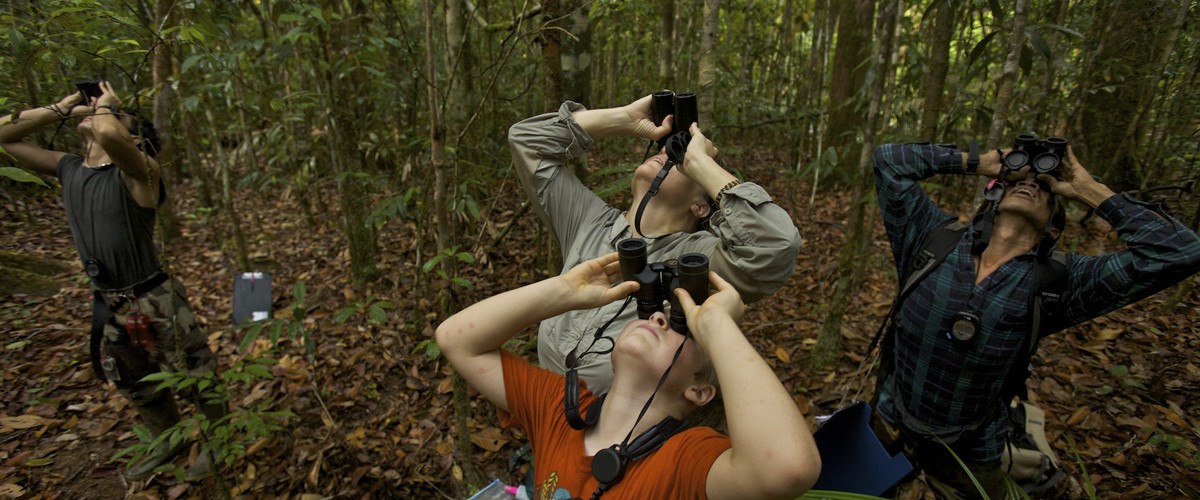By Kat Scott, Research Manager
Hailing from the UK, I am used to ancient oak woodlands and man-made pine forests. Until coming to Borneo, I assumed that apart from the redwoods in America, British trees were the biggest that there were. However, having worked in Kalimantan for the past few years, I have quickly realized that this is not the case. In Gunung Palung National Park (GPNP), we work among 8 different habitat types, including lowland rainforest, home to some of the biggest tropical trees in the world. This variety of habitats allows for a vast diversity of species to exist, and the timing of fruiting seasons between them provides food for orangutans throughout the year.
GPNP is home to many magnificent, rare and very ancient trees. Ironwood (Eusyderoxylon zwageri) and Dipterocarps (Dipterocarpaceae) dominate the lowland forest landscape and provide food, shelter and canopy cover for the inhabitants of the forest. Their branches provide homes for termites, tree holes for lorises and hornbills, and highways for orangutans. Fallen leaves act as ground cover, allowing the smallest organisms in this ecosystem to thrive. The biggest orangutan parties that we have observed involved huge durian and Dipterocarp trees, which are large enough that the orangutans can socialize, eat, and play with each other without encroaching into each individual’s space. Solid branches and big leaves also provide the perfect nest building materials, and we find that our orangutans frequently make nests in the branches of large Shorea trees.

|
| Kat displaying the size of some of the beautiful trees found in Gunung Palung National Park, West Kalimantan. |
Sometimes big trees are parasitized by other species. Strangler figs live up to their name, with some claiming their tree victims at a young age, twisting and squeezing their way up trunks and branches until they eventually outgrow them. The fig fruits serve as a ‘fall-back’ resource for many animals including orangutans, meaning that in times of fruit scarcity in the forest, the animals still have access to a good source of nutrition.Big trees are also important for many other reasons. In fact, Dipterocarps are the main group of trees that undergo the large fruit mastings that we see in Borneo every 2-10 years. Masting is a term used to describe a period of time where certain tree species synchronize reproduction, fruiting all at the same time. Masting brings the elusive, cryptic animal species out of their hiding places in the rainforest and it is a time when we observe many different species of animals feeding together. When these trees fruit and the seeds disperse, seedling nurseries are created across the forest floor, thus perpetuating the continuous cycle of growth. These seedlings take decades to grow to full height. However, right now annual forest fires may destroy some of these seedlings and they will thus be lost from the cycle. The need for sustainable farming and livelihood practices and responsible land use management in Indonesia is incredibly important, and this is where our conservation team comes in.

|
| GPOCP staff member pondering the business of nature while admiring the magnitude of the foliage surrounding him. |
With logging and hunting interrupting the natural forest regeneration cycle, many tree species are facing extinction. When we talk about the endangered species of Borneo, we often focus only on the fauna and ignore the flora. However, trees face many of the same conservation threats as charismatic species like the orangutan. In much the same way as people become outraged by orangutans being poached for the pet trade or killed during land clearing by oil palm companies, we should also be aware of the devastating effects that the loss of even one tree species might have on the rainforest ecosystem.
On a slightly less serious note, one thing I have realized from my time in the forest is that when the trees die or erosion causes them to fall, new habitats are also created! A large Shorea tree fell meters away from my house in Cabang Panti a few weeks ago, after hanging precariously over the river for a while. It took another large Dipterocap with it, claiming smaller tree victims along the way and ripping huge chunks of bark off other nearby trees. However, this has now provided a bridge for the long-tailed macaques and red langurs that come to taunt me at 5:30 am every morning when the sun comes up. As this tree breaks down, it will provide a range of services for many members of the rainforest. It is this circle of life that allows for the rainforest to continue and that is what we must work hard to protect.









